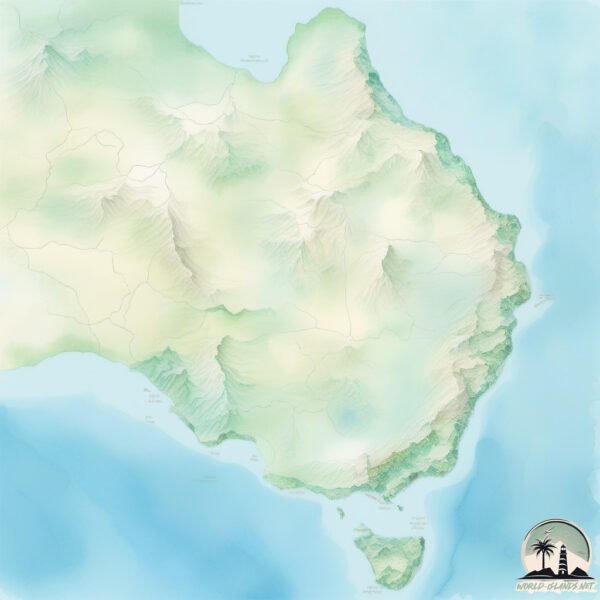Welcome to Maria , a Polar island in the Greenland Sea, part of the majestic Arctic Ocean. This guide offers a comprehensive overview of what makes Maria unique – from its geography and climate to its population, infrastructure, and beyond. Dive into the details:
Geography and size of Maria
Size: 8.827 km²Coastline: 34.4 kmOcean: Arctic OceanSea: Greenland SeaContinent: North America
Maria is a Small Island spanning 8.8 km² with a coastline of 34.4 km.
Archipel: –
Tectonic Plate: North America – Covers North America and parts of the Atlantic and Arctic Oceans, characterized by diverse geological features and varying levels of seismic activity.
The geographic heart of the island is pinpointed at these coordinates:
Climate and weather of Maria
Climate Zone: PolarClimate Details: TundraTemperature: Cold
Climate Characteristics: The tundra climate features long, extremely cold winters and short, cool summers. Vegetation is limited to mosses, lichens, and small shrubs due to the low temperatures and short growing seasons. Biodiversity is low, but some specialized species thrive.
Topography and nature of Maria
Timezone: UTC-03:00Timezone places: America/Sao_PauloMax. Elevation: 240 m Mean Elevation: 121 mVegetation: Herbaceous CoverTree Coverage: 36%
The mean elevation is 121 m. The highest elevation on the island reaches approximately 240 meters above sea level. The island is characterized by Hills: Gently sloping landforms with rounded tops, having a maximum elevation between 200 and 500 meters. Hills contribute to a varied landscape on islands.
Dominating Vegetation: Herbaceous Cover
Vegetation: 3 vegetation zones – Moderately Diverse Island
Infrastructure and Travelling to Maria
Does the island have a public airport? no .
Does the island have a major port? no .
The mean population of Maria is 0 per km². Maria is Uninhabited. The island belongs to Greenland .
Continuing your journey, Ella is the next notable island, situated merely km away.
The Maria Island Walk: Our Story | Australian Wildlife Journeys
Maria Island National Park lies just a few kilometres off Tasmania's east coast, easily accessible from Hobart. It's spectacular ...
The Maria Island Walk: Our Story | Australian Wildlife Journeys
Maria Island National Park lies just a few kilometres off Tasmania's ...
Maria Island National Park lies just a few kilometres off Tasmania's east coast, easily accessible from Hobart. It's spectacular ...
THE BEST THINGS TO DO ON MARIA ISLAND, TASMANIA - Our Favourite Place!!
In this video we head to the east coast of Tasmania to discover all ...
In this video we head to the east coast of Tasmania to discover all the incredible things to do on Maria Island! This island is ...
Best of Maria Island + Bishop & Clerk track | Bucket list adventure 9/52
Best of Maria Island + exploring the Bishop and Clerk summit track ...
Best of Maria Island + exploring the Bishop and Clerk summit track walk over the islands north cliffs - Bucket list adventure 9/52 ...
Greenland is classified as Developed region: nonG7: Developed economies outside of the Group of Seven, characterized by high income and advanced economic structures. The level of income is High income: OECD.
News – Latest Updates and Headlines from Maria
Stay informed with the most recent news and important headlines from Maria. Here’s a roundup of the latest developments.
Loading...
Please note: The data used here has been primarily extracted from satellite readings. Deviations from exact values may occur, particularly regarding the height of elevations and population density. Land area and coastline measurements refer to average values at mean high tide.

